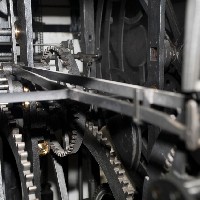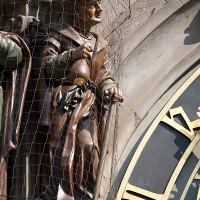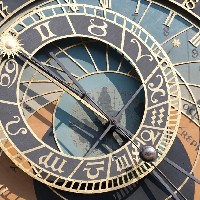Breadcrumbs navigation
The Astronomical Clock Machine
The machine of the astronomical clock is a significant technical monument, because some of the original components of the set are still functional. The basic structure of the machine has not changed since the Middle Ages really.
The most important task of the machine was to move the astrolabe and later also theother external parts, such as the figure of death, the apostles, the calendarium, etc.
The most basic element, i.e. the basic drive of the machine, were the weights.
The soul of the machine are three gears.
The entire machine of the astronomical clock is composed of four parts
The most important is the main machine, also called pointing. This machine operates three pointers of the astronomical dial with three concentric wheels. Three large coaxial wheels have the same diameter, but unequal number of hand-polished, triangular teeth.
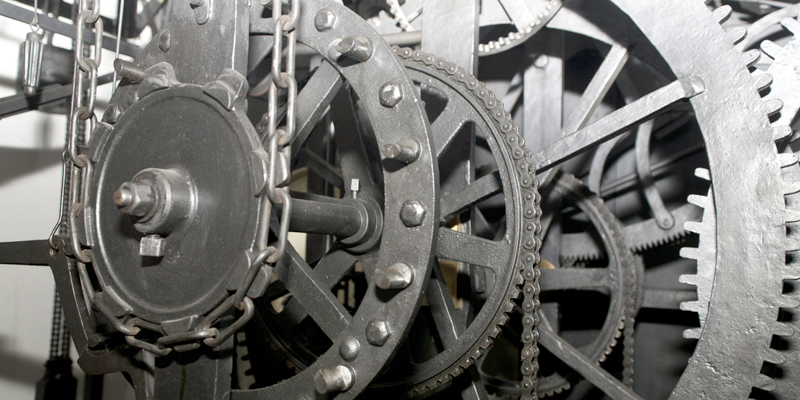
- 365 teeth there are on the wheel moving the zodiac and the ecliptic
- 366 teeth there are on wheel moving the Sun and the golden hand
- 379 teeth there are on wheel moving the raffia of the Moon
Furthermore, in certain time three other machines start to work. After completing their work, the machines lock themselves and await further impulse of the main machine.
- The ringing machine together with the apostles machine were modified during the big repair in 1865 and they set in motion not only the two windows, but also the apostles on wooden turntables and other moving sculptures, which are the Skeleton, Miser, Vanity and Turk.
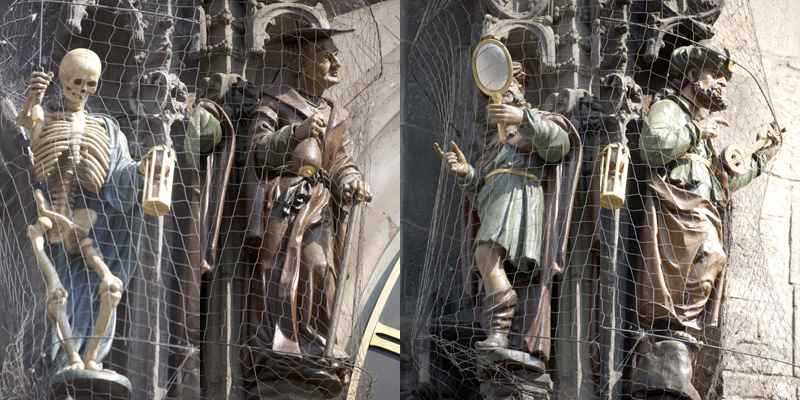
- The chiming machine for striking or beating for full hours and periods of 15, 30 and 45 minutes: it was originally not part of the main machine, but was probably in the tower of the Old Town Hall. Only during subsequent modifications in the 17th century it was relocated to the main machine and significant technical adjustments were made to make the running of the machine more accurate.
The machine for the calendar panel runs during midnight to rotate the board one day forward. Initially, the movement was secured by hand. Only in the 16th century it was secured mechanically.
The „24-hour" machine is a modern machine designed in 1957.
All details of the technical description on ![]() orloj.eu.
orloj.eu.
